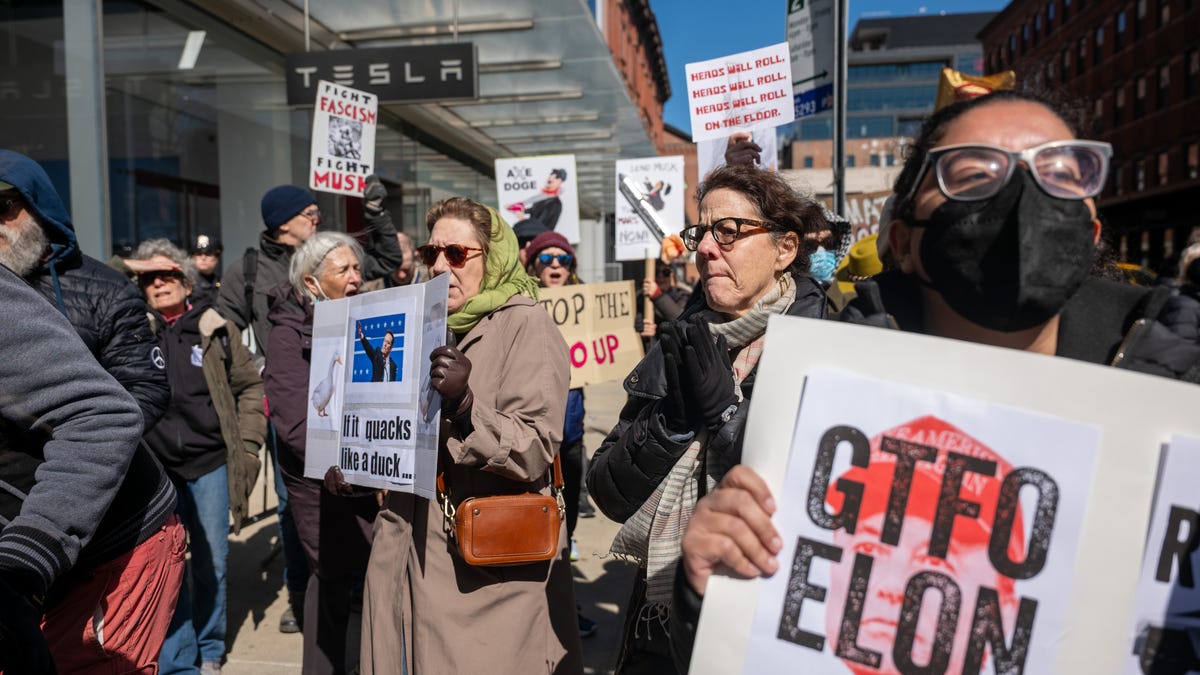
The Shifting Sands of Corporate America: Is Government Intervention the Key to Tesla’s Future?
The business world is a turbulent sea, constantly battered by the waves of public opinion and shifting economic tides. Nowhere is this more evident than in the ongoing saga surrounding Tesla, the electric vehicle giant led by the ever-controversial Elon Musk. Recent months have witnessed a dramatic escalation of protests, ranging from peaceful demonstrations to more disruptive actions, targeting both Tesla itself and Musk’s leadership. These protests, fueled by a diverse array of concerns—ranging from labor practices to environmental impact and Musk’s public persona—pose a significant threat to the company’s stability and future growth.
The intensity and frequency of these protests are undeniably impacting Tesla’s operations. Supply chains are facing disruption, investor confidence is wavering, and the overall brand image is taking a hit. This presents a classic case study in the complex interplay between corporate actions, public sentiment, and governmental response. In the face of this escalating crisis, the government has found itself increasingly drawn into the fray.
This intervention isn’t simply a matter of passive observation. Instead, there’s a noticeable shift towards active engagement, reflecting a recognition of Tesla’s significant role in the national economy and the broader implications of the situation. The government’s involvement can be seen as a calculated response to prevent a potential collapse of a major player in the burgeoning electric vehicle market. The ramifications of such a collapse would extend far beyond Tesla itself, impacting employment, technological innovation, and the national push towards sustainable energy.
The government’s actions are likely driven by several factors. Firstly, there’s the significant economic impact of Tesla’s operations. The company employs thousands of individuals directly, and its success ripples through numerous supporting industries. A sudden downturn would cause widespread job losses and economic instability, something the government is keen to avoid. Secondly, Tesla’s position at the forefront of electric vehicle technology makes it a crucial player in achieving national climate goals. Supporting Tesla’s continued success is vital to accelerating the transition towards cleaner energy solutions.
However, the government’s involvement is not without its own challenges and potential pitfalls. Direct intervention in a private company’s affairs raises concerns about government overreach and potential interference in free market principles. Critics might argue that the government should maintain a hands-off approach, allowing the market to regulate itself. This intervention also risks accusations of favoritism, potentially opening the door to allegations of unfair advantages being granted to a specific corporation.
The situation is further complicated by the multifaceted nature of the protests. Addressing the underlying concerns driving the protests is crucial. Understanding the various perspectives and addressing legitimate issues, such as worker rights and environmental responsibility, is vital to finding a sustainable solution. Simply suppressing dissent isn’t a viable long-term strategy; instead, a collaborative approach that involves dialogue and constructive engagement between all parties is essential.
The future of Tesla, therefore, hangs in the balance. The success of the government’s intervention will depend on its ability to navigate these complex issues and to find a solution that safeguards both the company’s future and the principles of a free and fair market. The path forward requires a delicate balance between protecting national interests and respecting the autonomy of private businesses. The coming months will undoubtedly reveal whether this delicate balancing act can be successfully achieved.



Leave a Reply